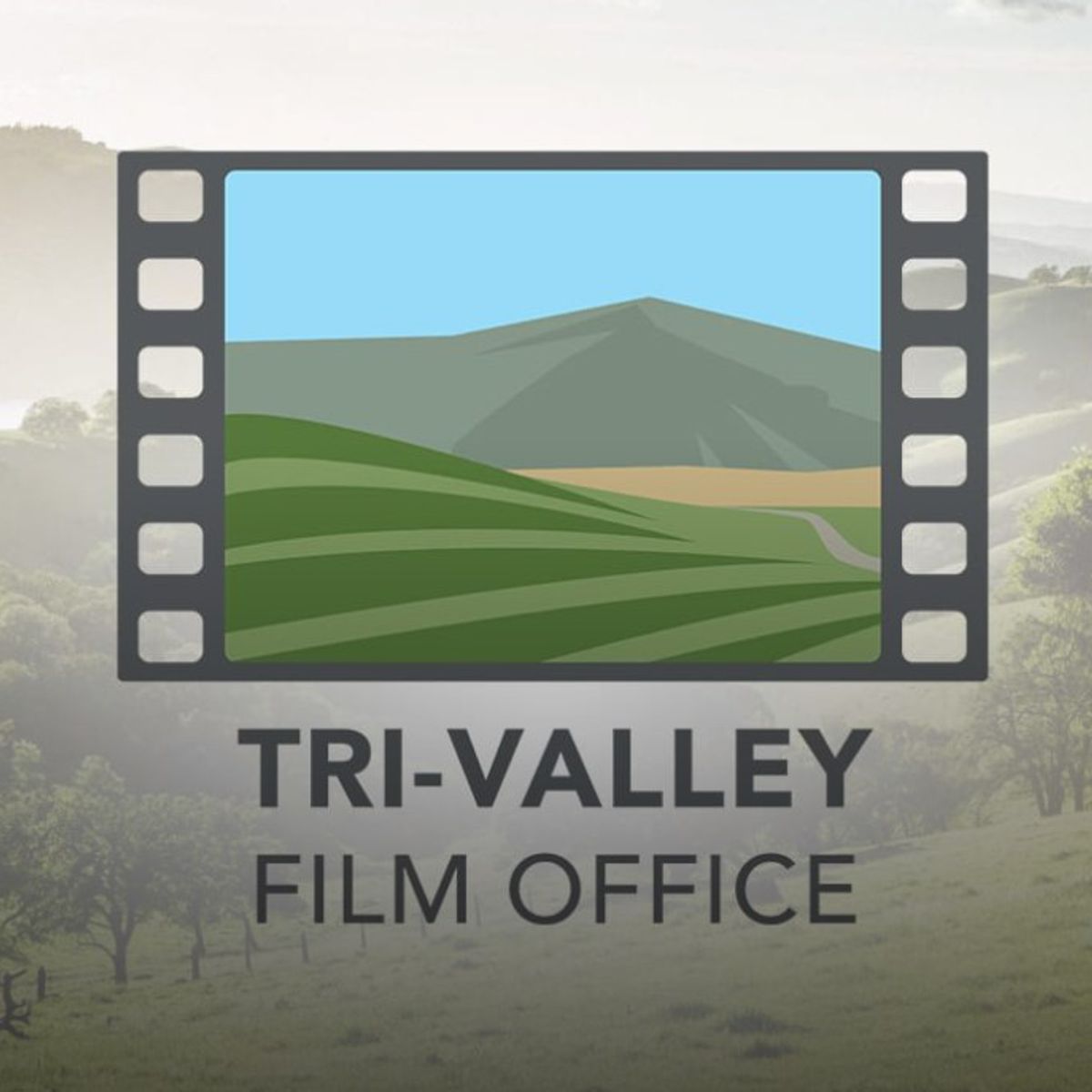Regional Film Office Gets New Home
Regional Film Office Gets New Home

Last summer Visit Tri-Valley, the region's official tourism bureau, acquired the former Livermore Valley Film Office after the office's long-time director, Jeanie Haigh, retired. "In a move designed to more fully advance the Tri-Valley as a destination attractive to the film industry, we are very pleased to work with our partners at Visit Tri-Valley to continue the important role of a regional film office," said Dawn Argula, Livermore Valley Chamber of Commerce CEO, when the change was announced.
The Tri-Valley Film Office
Many of the qualities that make the Tri-Valley region so attractive to residents and businesses also make it ideal as a setting for commercials, Hollywood films, and photo shoots. The region has rural sites, beautiful vineyards, mansions, warehouses, and office parks, as well as picturesque downtown and neighborhood areas. With production-friendly weather that includes a daytime temperature average of 73 degrees and an annual average of 14 inches of rainfall, the Tri-Valley is a location scout's dream come true, according to the Tri-Valley Film Office. As a smaller region, the Tri-Valley also offers a more streamlined film permitting process than larger cities while being easy to access via Oakland International Airport.
The newly renamed Tri-Valley Film Office serves as the region's liaison for film permitting, location scouting, and other related services. At Visit Tri-Valley, Certified Film Liaison Justin Bower works hard to help spread the word that the Tri-Valley is an ideal destination for all types of film, television, and still production. Recently he worked with a regional security firm to find an appropriate Tri-Valley location for a photo shoot. He has also worked with student filmmakers and suggested shooting locations in the Altamont Pass in Livermore for a music video.
If a production needs a particular permit or a specific location, they can go to the Tri-Valley Film Office to get help. "If someone's looking to film in Hacienda, they can ask me, what are the proper channels and what kind of permits do we need?" says Bower. "I can help them with that and provide the information."
The advantages of shooting in the Tri-Valley are many, according to the Film Office. They include one-stop permitting; an experienced staff that breaks down scripts, scouts locations, facilitates permits, and stays with projects during production; dramatic residential and office properties, in addition to neighborhoods that span every economic level and look; a local hospital that has empty space available with great interior and exterior vistas; one of the largest wind farms in the country; national laboratories, which have been used for filming; the experienced production crews of Northern California; and an abundance of hotel rooms and restaurants close to all locations ranging from top of the line to more moderate crew facilities.
Movies in Tri-Valley History
The Tri-Valley region is not new to the movie industry. While there is no official database of movies or commercials shot on location in the Tri-Valley, the region has many historical connections to filmmaking. In the early 1900s, "Pleasanton's city fathers made an attempt to attract the nascent film industry, hoping that some company or another would establish a production facility in town," writes Ken MacLennan in Pleasanton, California: A Brief History. "No studios took up the offer, but in 1917, a production crew from Artcraft Pictures arrived to shoot location scenes for Mary Pickford's adaptation of the Kate Douglas Wiggin novel Rebecca of Sunnybrook Farm. Although Wiggin's story was set in Maine, Pleasanton's architecture and ambiance were sufficiently removed from a distinctly Californian style that it could effectively serve as an Anytown, USA."
Between 1917 and 1926, more than 20 productions used Pleasanton for location shooting, according to MacLennan. In The Adventures of Tom Sawyer, in 1917, Pleasanton stood in for Hannibal, Missouri. It pretended to be Eddysville, Massachusetts in a 1924 film called Lover's Lane and Winnebago, Wisconsin in a 1926 movie called Gigolo. Those were silent films. The first full-length film with synchronized dialogue, known as a talking picture, was released in 1927 and for a time spelled an end to location shooting since the development of this new sound technology turned the convenient railroad transit between Pleasanton and Southern California into a noisy problem.
Over time film technology became sufficiently advanced for shooting outside of sound stages and different productions took advantage of the Tri-Valley's varied and sometimes unique location types. Many car commercials have been shot in the Tri-Valley, including one for the Ford F-150. The 1993 hit film Mrs. Doubtfire included Tri-Valley locations. Episodes of the MythBusters series were filmed here, as well as parts of 13 Reasons Why; Hemingway & Gellhorn, which starred Nicole Kidman; and Star Trek Into Darkness.
While independent film Death Blood 4: Revenge of the Killer Nano-Robotic Blood Virus may never be as famous as a Star Trek film, over time it may become a cult favorite for Pleasanton residents. The movie was shot at many local landmarks, including Meadowlark Dairy, Lions Wayside Park, the Veterans Memorial Building, Pleasant Plaza, and Inklings Coffee. The movie, which filmmaker and Pleasanton resident Chris De Pretis calls "silly," was meant to be a learning experience as he made his first feature-length film. In the end, he learned more than expected. "What was really humbling about the whole process is how much the community came together to help us out," De Pretis told a Pleasanton Weekly reporter in 2020.
The film made by De Pretis is not the first nor most recent to be shot in the Tri-Valley; Visit-Tri Valley officials hope there will be many more to come. "The Tri-Valley is home to seriously stunning landscapes, quaint main streets overflowing with charm, a picturesque wine country, and plenty of wide-open spaces," notes Visit Tri-Valley President and CEO Tracy Farhad. "We know these are key ingredients for filmmaking, and we're pleased to share our region with top film, TV, and commercial productions."




